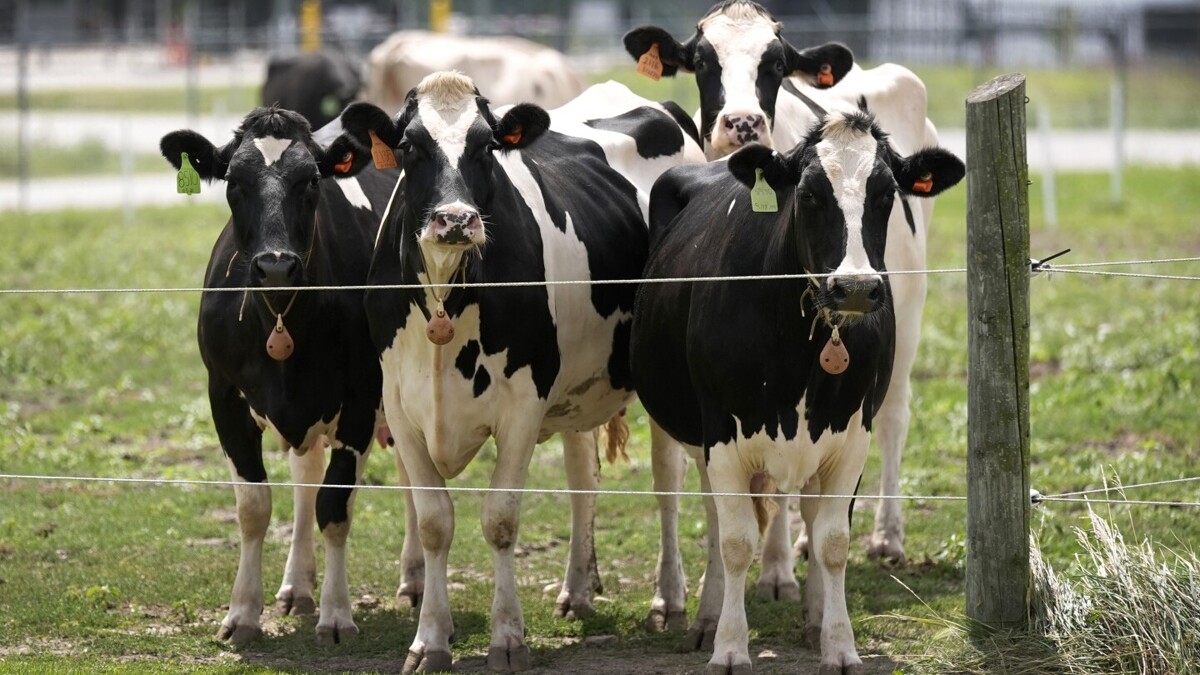Dairy cattle in Nevada have been infected with a new type of bird flu that’s different from the version that has spread in U.S. herds since last year, Agriculture Department officials said Wednesday.
The detection indicates that distinct forms of the virus known as Type A H5N1 have spilled over from wild birds into cattle at least twice. Experts said it raises new questions about wider spread and the difficulty of controlling infections in animals and the people who work closely with them.
“I always thought one bird-to-cow transmission was a very rare event. Seems that may not be the case,” said Richard Webby, an influenza expert at St. Jude Children’s Research Hospital.
both the quotes I just gave are directly from papers referenced by poore and nemecek.
ok I think we have a few issues here. Firstly I am not even sure if any of the things I was talking about get their data from poore and nemecek wich as far as I can tell is about co2 from the little I have access to them. So its sorta a tangent for me to begin with. I think now I get that you are reference references that the poore and nemecek paper uses to show the data is limited in how it can be used. Ok so im a guy on the internet and while I do have some experience with evaluating scientific papers I don’t do it in my current day to day and im quite frankly not going to. I do know that it is common for a paper to mention limitations of its study but that does not invalidate a paper that uses it as a reference. At the end of the day its great you have an issue but its not enough for me to throw out common data from relatively reputable sources when I can’t find any more professional critiques and thats even assuming the paper you pulled out is source data for it which it may not be. You did successfully get me to go look at a lot of things again and I posted links so its not a total waste but look. Im pretty much done. You have not convinced me that articles are working with flawed data.
my goal was actually to get you to give me compelling data. I’m not quite sure how it ended up the other way around.
I mean in the mix I have the food conversion link and that data as I said is industry data so im not sure if that suffices. I think we just sorta went on a tangent with the one paper. Its the most straight forward anyway for the vegan vs meat reduction. vegan being 1/1 usage of plant matter and chicken 1/3, pork 1/6., beef 1/14. I mean that as averages and there is variability especialin in beef but even in chicken worse case to beef best case it wins out and average conversion your looking at four fold efficiency so bascially if you can get X number of people to be vegans getting 4X people to limit themselves to chicken should have the same effect and anything more is gravy. My point way back with militant vegans is they will harras the idea of reducing meat because everyone should become vegan but from my experience limiting meat intake to chicken and/or reducing meat in general is much more likely with folks and much more likely to get in large numbers so they are sorta working against themselves. I mean americans eat a rediculous amounts of beef. All meat really but mainly due to fast food a lot of beef. To give a real world example my wife and I are not vegan but we do eat mainly chicken and pork and now we will split a chicken breast between us in a typical dinner. Compared to what we ate two decades ago or I think even worse when we were young and unmarried and like a dozen of our current selves would have to go vegan to get the same effect. None of that is obviously and exact thing as im averaging and using a bit of guestimating but I hope the gist comes out.


